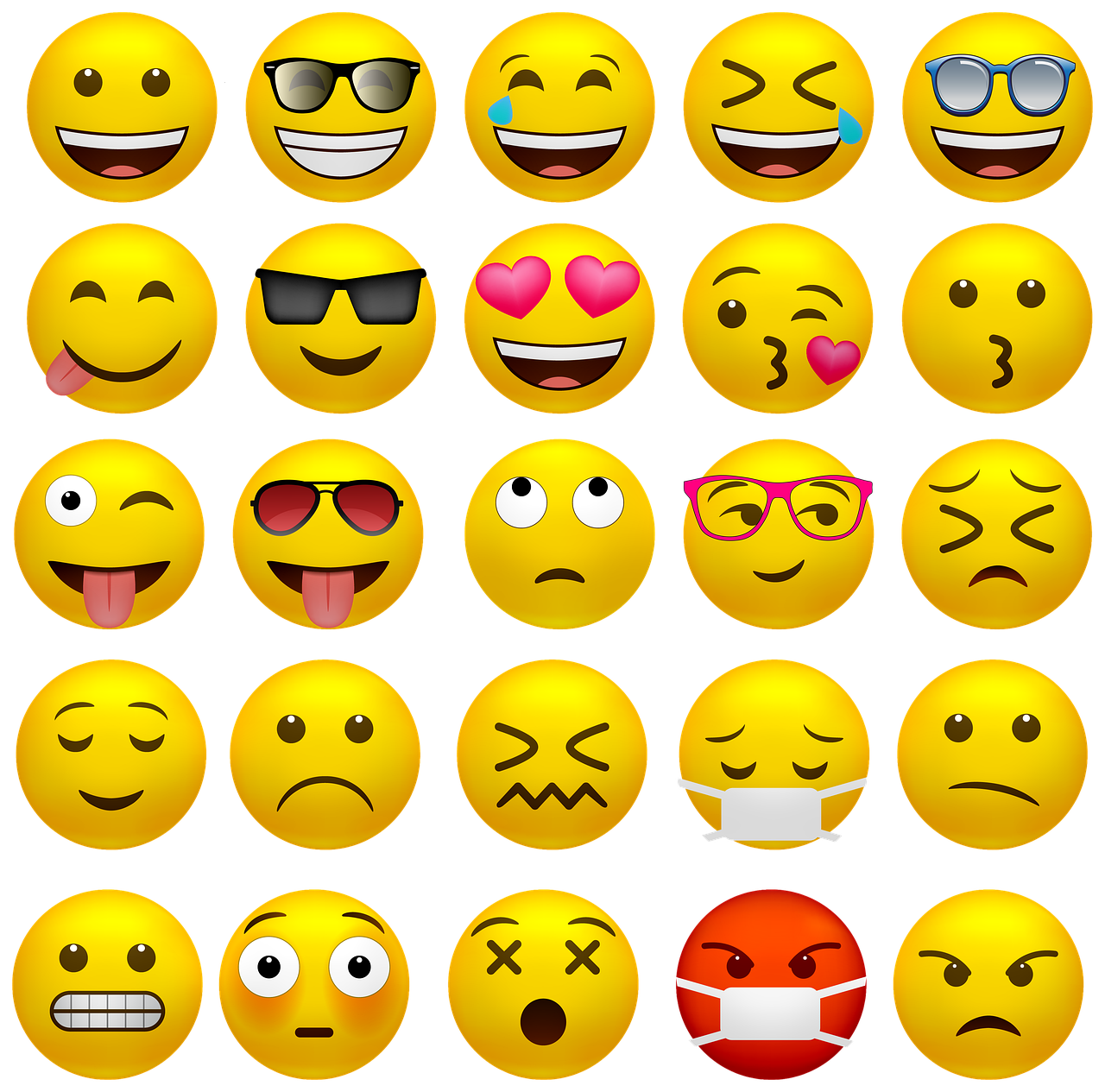Photo: Pixabay
Welcome to World Emoji Day! July 17 is the day set aside to celebrate those little pictures that capture our feelings and render words unnecessary. Why July 17? That particular date is the one that appears on the calendar emoji and is also the date when Apple unveiled iCal for Mac at the MacWorld Expo back in 2002. Once limited to the technology realm, emoji have proliferated and have materialized practically everywhere. They appear on merchandise, such as tee shirts, hats, and backpacks and bakeware such as cookie stamps and cutters, candy molds, and cupcake baking pans and cups. When you are unsure of the meaning of a particular emoji or are looking for the right icon to convey your thoughts and feelings, you can consult the Emojipedia. And just when you thought that emoji could travel no farther, The Emoji Movie was released in 2017 with a sequel coming right around the corner.
Photo: OpenMoji
Emoji have even made an appearance in the courts. Back in 2018, we reported that, in an historic first, the Seventh Circuit Court of Appeals included in its published opinion a poop emoji that had been submitted as evidence in an employment discrimination case. But what are some of the legal issues that might arise involving emoji? The two primary categories appear to be misunderstandings that require judicial interpretation and intervention and the protection afforded emoji under intellectual property laws. One emoji may have multiple meanings or a meaning that is not readily apparent or may depict images that are specific to particular culture, thus forcing parties to rely upon the courts to determine their meaning. Cases that required judicial interpretation of emoji ranged from whether the use of a emoticon with the tongue sticking out meant that the prior statement was a joke or a prank [(See Elonis v. U.S., 135 S. Ct. 2001 (2015)], whether the use of a thumbs-up emoji demonstrated acquiescence to a custody arrangement [(See Nunez Bardales v. Lamothe, 459 F. Supp. 3d 459 (M.D. Tenn, 2019)], whether a smiley face in a death threat transformed the message into a joke (See In re L.F., 2015 WL 3500616), whether the use of a smiling emoji in connection with a teen’s text message that she wanted to kill her mother constituted harassment (See State v. D.R.C., 2020 WL 3968198), and whether communications between employees could be interpreted as harassment or discrimination in the workplace [(See Murdoch v. Medjet Assistance, LLC, 294 F. Supp. 3d 1242 (N.D. Ala., 2018)]. In addition to the types of cases just mentioned, emoji can play an important role in cases addressing claims of or challenges to free speech. Many of these First Amendment cases involve an analysis of whether, taken within context, the speech at issue constitutes a true threat, therefore forfeiting its First Amendment protection.
The second category of legal issues facing emoji concerns the role intellectual property plays in these misunderstandings of interpretation. Because there is copyright and trademark protection afforded individual emoji and emoji sets, the resulting depiction variations and lack of standardization leads to confusion and misconception. Unicode, an organization attempting to standardize emoji, only standardizes the codes, not the depictions, thus leading to more diversity and an increased possibility of greater misunderstandings in interpretation. Additionally, some emoji are not Unicode-coded emoji, thus leading to more occasions for variation.
There are so many excellent articles devoted to this newly emerging topic. For further reading about emojis and the roles they are playing in the law today, check out some of these articles:
Jonathan Geneus, Emoji: The Caricatured Lawsuit, 16 Colo. Tech. L.J. 431 (2018)
Eric Goldman, Emojis and the Law, 93 Wash. L. Rev. 1227 (2018)
Stephen Harrison, How Emojis Have Invaded the Courtroom , Slate, (November 26, 2019)
Patrick M. Milott, :-P Emojis and Emoticons in Court, 44 Reporter 61 (2017)
Elie Mystal, Is Emoji Law Going to Be a Thing? , Above the Law, (February 25, 2019)



